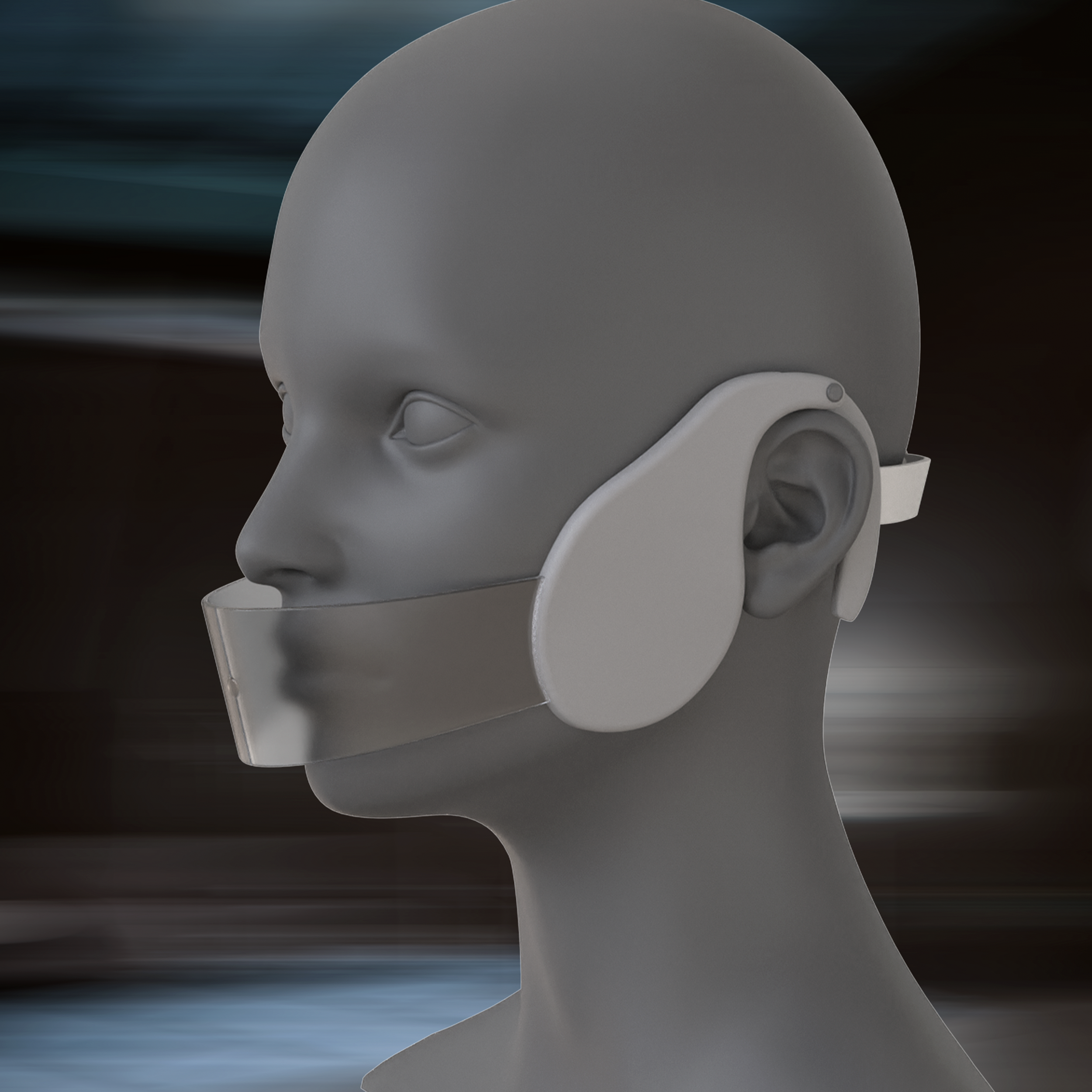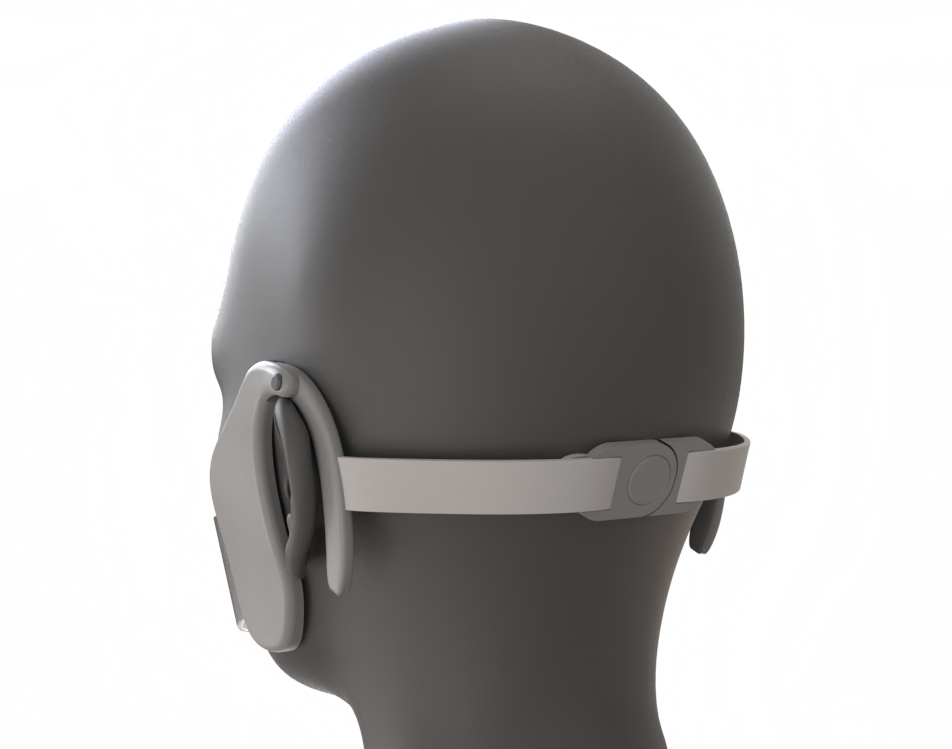TMJ RELIEF
Physical Therapy to Temporomandibular Joint disorders
a self massage tool
TMJ RELIEF is a self-massage tool designed for TMJ patients to easily locate deep muscles and massage the pain area by themselves. The tool is set up with multiple modes and a variety of pressure to provide a convenient self-massaging experience. This is a wearable device consisting of two components on both sides, an adjustable band, a mask, and an in-mouth tool with a magnet to locate the pain area.

Background:
Temporomandibular joint (TMJ) disorder refers to a cluster of conditions characterized by pain in the TMJ or its surrounding tissues, functional limitations of the mandible, or clicking in the TMJ during motion. According to the National Institute of Dental and Craniofacial ResearchTrusted Source, as many as 10 million Americans suffer from TMJ disorders. TMJ may cause painful chewing, difficulty opening the mouth, popping, headaches, facial muscle pain around the trigger point, swelling on the face, and other issues. There is little evidence to suggest that any TMJ disorder treatment modality is superior to any other, although it is generally accepted that self-care and behavioral interventions should be encouraged for all patients, regardless of which therapies are considered. ( Buescher JJ. Temporomandibular joint disorders. Am Fam Physician. )Therapy prescribed often includes exercise and massage to relieve the tension.

Photo by María Victoria Heredia Reyes

Problem Statement:
TMJ will lead to pain mainly in 4 facial muscles, the masseter, the temporalis, the internal pterygoid, and the external pterygoid muscles. Deep muscles can be hard to locate and massage from the face. And the current therapy method requires using two fingers to massage pain points within the muscle from reaching the mouth and the jaw. Due to how deep these muscles are, users have a hard time doing so by themselves in public. With TMJ RELIEF, the patient can mitigate an embarrassing situation when attempting to relieve some pain. There is a communication delay will providing feedback between the physical therapist and the TMJ patient; the patient cannot respond efficiently about the force and location of their massage therapy session with their two fingers sticked in thier mouths.
Solutions:
Solution A: Use an electromagnet and steel to locate the deep muscle from inside the mouth and on the face. Electromagnetic force can be adjusted by the adjustment of current. The industrial electromagnet can only directly attract electromagnets or steel. The force will reduce dramatically by adding distance in between. The copper wire electromagnet works, but the force is not strong enough.
Solution
B: Use the magnet to locate deep muscles from inside the mouth and on the face. Three ways to adjust the force used to massage-
Through the motion of the step motor within the device, we can adjust the force used to massage.
By manually adjusting the dial button, we can adjust the force used to massage.
Through the detection of pressure on the face by the sensors, the force used to massage can be set to adjust to fit automatically.
A vibration feature is added to further assist the message.

→← squeeze
Ideation
The moving part is designed to increase or decrease pressure force; it can pinch oral muscles by moving a magnet.
Research
The masticatory muscle thickness range: 5.9-18mm
Solution B design features:
Detect the pressure data: when pressure is over 20N, the device automatically reduces the pressure by moving the magnet away through the stepper motor.
Detect the pressure data: when pressure is under 10N, the device automatically increases the pressure by moving the magnet forward through the stepper motor.
The device comes with a dial button and a screen, providing information about the current mode and enabling users to control the pressure and set different modes.
The device can be set up with a therapy loop, coded to massage for 10 seconds, pause for 5 seconds, and repeat three times for 1 exercise.
The device can vibrate in 3 modes to further assist with the massage.

Prototyping
1. This tool is designed to be suitable for the inside of the mouth. It can be used in multiple directions. The small magnet is used to locate painful muscles.
2. The inflatable bag is designed to increase the force of the moving parts.



Rendering





